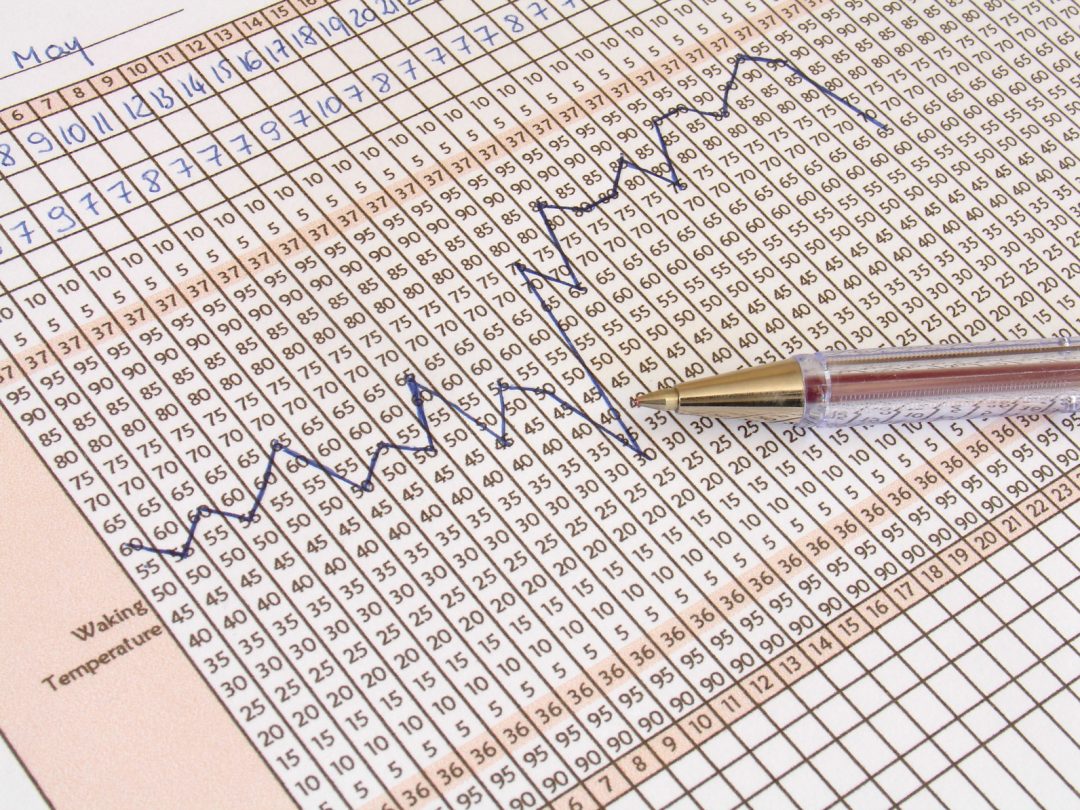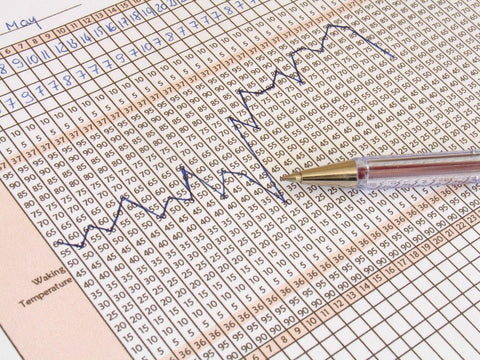
How to Chart Your Basal Body Temperature to Predict Ovulation

Basal Body Temperature Topics Covered in This Article:
- What Is Basal Body Temperature
- Ovulation and Your Basal Body Temperature (BBT)
- How To Measure Your Basal Body Temperature
- Charting Your Basal Temperature Pattern
- Pros and Cons of Charting Your Basal Body Temperature
- Basal Body Temperature When Pregnant
What Is Basal Body Temperature
Your basal body temperature is your lowest body temperature in a 24-hour period. This low temperature happens as you sleep. Your basal body temperature varies based on many factors, including your hormones.Ovulation and Your Basal Body Temperature (BBT)
A woman's basal body temperature is lower during the first part her the cycle. In most women, the is a slight increase in temperature as she ovulates. The bbt remains elevated after ovulation until right before her next period. The base basal body temperature varies from person to person. For most women, between 96 and 98 degrees is a normal temperature before ovulation and 97 to 99 after.
The changes are small increases. The temperature shift is from 1/10 to 1/2 degree. You can't use a regular thermometer that you check for fevers with. It is not sensitive enough to catch the small shifts in temperature.
You have to use a basal thermometer, to get accurate readings. Charting each day's temperature will show when ovulation has already happened. Reviewing your monthly charts will show the pattern of when ovulation happens in your cycle. You will be able to figure out when you are fertile from the recorded temperatures.
How To Measure Your Basal Body Temperature
Each morning take your temperature with your basal thermometer as soon as you wake up. Don't do anything else other than putting the basal thermometer in your mouth. Getting out of bed, talking, eating, drinking, having sex, or smoking will mess up your reading.
You should take your temperature at around the same time each day, so setting your alarm clock is helpful. Be sure to follow the directions provided with your basal thermometer. They will tell you how long it takes for the temperature reading to be complete.
WebMD suggests that your temperature should be recorded to the closest 1/10th for the best accuracy. You can download a free basal body temperature chart to record your temperatures on.
Charting Your Basal Temperature Pattern
Every morning you have to record your temperature on your chart. As each day's temperature is plotted on the graph, you will learn to recognize your own pattern. Your temperature rise may be sudden, gradual, or in steps. The pattern may vary from cycle to cycle.
Your basal temperature will vary if you are sick or have emotional upsets. There are many issues that will cause atypical readings. Illness, jet lag, insomnia, smoking, drinking alcohol, and using an electric blanket can alter your bbt pattern.
You should note oddities in your life (sickness, stress, etc) on your chart. This will help you understand odd changes in your temperature chart. In the beginning, you should get help in reading your BBT chart.
Taking Charge of Your Fertility is an awesome book that can help you understand your results. It is the gold standard of basal body temperature charting. You will gain a ton of helpful information in the book. You will understand the hows and whys of your cycle.
There are also several online communities that are devoted to helping you understand your charting results.
In time, you'll gain the knowledge and confidence in interpreting your chart. Be sure to chart your temperature for at least three months before relying on this method.Pros and Cons of Charting Your Basal Body Temperature
Pros of BBT Charting:
Inexpensive: You only need to buy a basal thermometer once. If you have a printer, you can print out the free bbt charts that you can find online.
Low Mess: All you need to do is put the thermometer in your mouth. Ovulation predictor kits, while quicker at detecting ovulation, have a definite mess factor associated with them.
Tells You A Lot About Your Cycle: Charting your basal temperatures for several months will let you see when you will ovulate during your cycle. Additionally, it can help you figure out if you have issues like luteal phase defect that can make getting and staying pregnant more difficult.
Cons of Charting Your Basal Temperature:
BBT Charting is Not for Everyone: Certain people will not be able to get reliable temperature readings. People who work shifts that change, who are taking new medications, or have high-stress lifestyles will not be ideal candidates for charting.
Takes Devotion: You have to be really invested in taking your temperature. You have to take your bbt temp every single morning at the same time. This rigid behavior might not work for some people.
Amount of Time It Takes to Get Valuable Information: BBT charting does provide a lot of terrific information about your cycle. Unfortunately, it takes a long time to collect the data. You really need to be taking your temperature for at least two straight months to figure out when you are ovulating in your cycle. That is about 60 days of daily temperature taking. If you are impatient, this is probably not the best ovulation prediction method for you.
Basal Body Temperature When Pregnant
Your basal temperature starts out on the low end when your period starts. After ovulation, you see the slight .1 - .5 degree increase in your basal temperature. For non-pregnant women, the temperature will drop back to the lower temperature level as menstruation starts. If your bbt stays elevated, or if you see an additional increase in your temperature, you may be pregnant!
Take a pregnancy test and find out!
Resources:
Norris S. Body Temperature in Ovulation. Canadian Medical Association Journal. 1952;67(4):336-338. Royston JP, Abrams RM.
An objective method for detecting the shift in basal body temperature in women. Biometrics. 1980 Jun;36(2):217-24. PubMed PMID: 7407311.
Tags:
Natural Fertility Signs
Quick links
Search
Contact Us
Shipping Information
Helpful Info
Terms of Service
Privacy Policy
Do not sell my personal information
Contact us
About us
BabyHopes.com is a family owned and operated business, opened in January 2001. We have been serving the trying to conceive community for over 20 years.

Leave a comment: